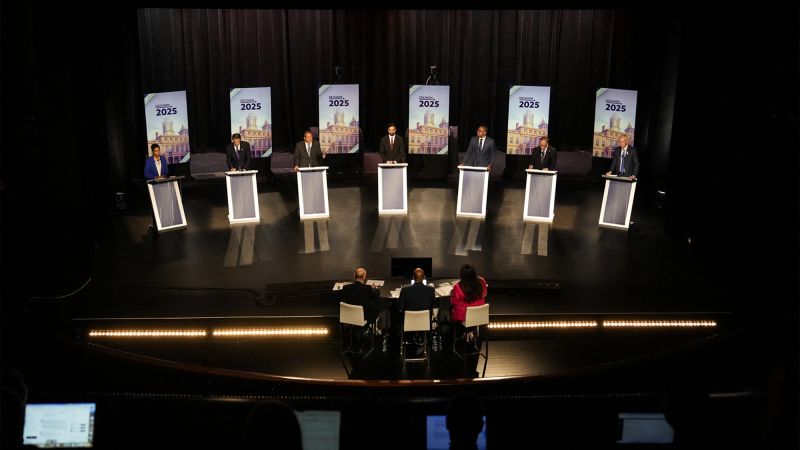In the upcoming Democratic primary for mayor of New York City, voters will once again have the opportunity to utilize ranked-choice voting, a process that was introduced four years ago but faced significant challenges, including a considerable tabulation error that delayed results. This time, city officials express optimism that lessons learned from previous experiences, along with new state law amendments, will ensure a more streamlined voting and counting process when residents cast their ballots on June 24.
Scheduled for June 24, Election Day will see voters ranking up to five candidates from a diverse slate comprising eleven contenders, including notable figures such as former Governor Andrew Cuomo and progressive hopefuls like State Assemblyman Zohran Mamdani, who is presently leading among progressive challengers. The election will evolve through a unique system where, in the event that no candidate garners more than 50% of first-choice votes, the lower-ranked candidates will be eliminated, and their votes will be redistributed among the remaining candidates as per the voters’ subsequent rankings. This cycle continues until only two candidates are left in the race.
Advocates of the “instant runoff” system claim it enhances voter engagement by allowing citizens to express preferences beyond a single candidate choice. They argue that this ranking system has potential benefits such as fostering a more representative outcome, as it mitigates the effect of split votes among similar candidates. However, detractors of the system voice concerns about its complexity, emphasizing that it may lead to confusion and could obscure results for less informed voters. Voters are encouraged to familiarize themselves with the intricacies of ranked-choice voting to ensure efficient participation.
With the timeline leading up to the primary, early voting commenced between June 14 and June 22, with Election Day ballots helping to form an initial picture of voter preferences. The New York City Board of Elections is set to report first-choice results, drawn from early voting and mail-in ballots received by June 20, ensuring voters remain informed of election progress. A week post-election, on July 1, initial ranked-choice results will be disclosed, with updates being released every Tuesday until results are finalized on July 15.
The structure of the ballot will be crucial, featuring a grid format where voters can list candidate names in designated rows corresponding to their ranked preferences. If a candidate achieves a majority of first-choice votes, they automatically win. Should that not occur, the counting process commences round by round, with the lowest-performing candidates progressively being eliminated until a winner is declared.
Historically, New York City’s first encounter with ranked-choice voting during the 2021 mayoral primary was fraught with issues, including a delay in mail ballot reporting that left voters and officials frustrated. A significant incident involved the erroneous inclusion of 135,000 test ballots, emphasizing the need for reforms. As Vincent Ignizio, deputy executive director of the city’s board of elections, assures, measures have since been implemented to prevent such mistakes from reoccurring, fostering confidence in the current election cycle.
The supporters of ranked-choice voting underline its efficiency, claiming it negates the necessity for separate runoff elections, which tend to consume time and resources. Additionally, it creates an environment where candidates are incentivized to maintain positive campaigning styles to appeal to a broader voter base, ensuring they do not drive away potential supporters from rival candidates.
Nevertheless, opponents argue that the potential for overcrowding on ballots and increased rejection rates may complicate the process. They contend that while ranking as many candidates as possible is critical in avoiding ballot exhaustion—a situation in which all ranked candidates have been eliminated—this requirement may disadvantage voters who lack the ability or means to extensively research all candidates. Recent legislative actions saw 17 states opt against implementing ranked-choice systems, showcasing the contentious nature of the practice in the country’s broader electoral landscape.
As New York City moves towards another round of ranked-choice voting, the results could shape not only the future of local elections but also the ongoing conversation surrounding voting reform in the United States, highlighting the balance between innovation in democratic practices and the need for clarity and accessibility for all voters.



